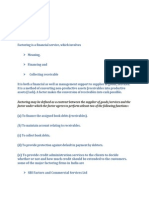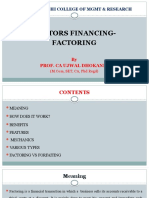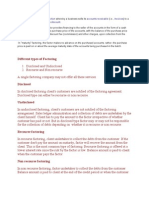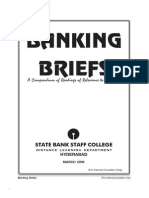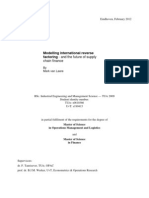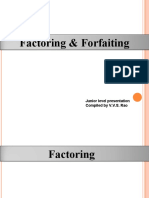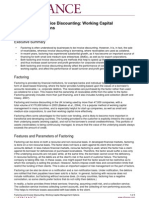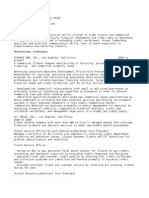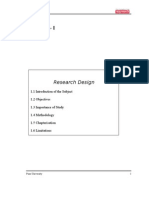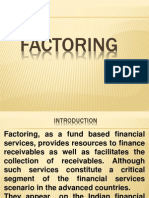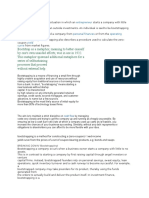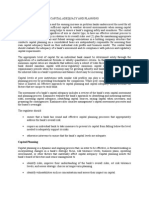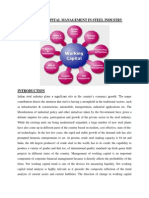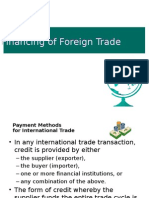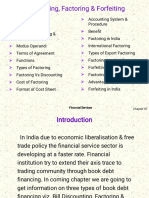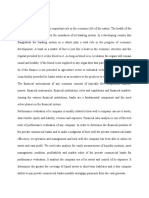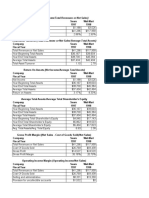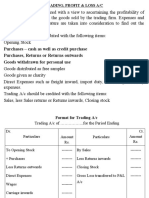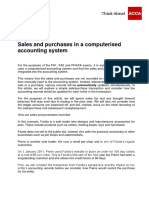Project Report on Factoring Services
Introduction
Factoring has a long and rich tradition, dating back 4,000 years. Almost every civilization that valued commerce has practiced some form of factoring, including the Romans who were the first to sell actual promissory notes at a discount. The first widespread, documented use of factoring occurred in the American colonies before the revolution. With the advent of the industrial revolution, factoring became more focused on the issue of credit, although the basic premise remained same. By assisting clients in determining the creditworthiness of their customer and setting credit limits, factors could actually guarantee payments for approved customers. Prior to the 1930s, factoring in this country occurred primarily in the textile and garment industries, as the industries were direct descendants of the colonial economy that used factoring so specifically. As time is passing by, and we are moving into the modern era of instant communication and a shrinking world, factoring plays an important role in the todays business. The increasing interest rates that marked the 1980's and 1990 are led to an increase in the number of new companies turning to the factoring business. Factoring is a way to raise quick capital in a manner that was called "off the balance sheet" financing. Since accounts receivables are an asset account, factoring is a way to raise quick cash without adding the liability of loan. Factoring is one of the oldest forms of business financing. It can be regarded as a cash management tool for many companies like garment industry where long receivables are a part of business cycle. Factoring is a service that covers the financing and collection of account receivables in domestic and international trade. It is an ongoing arrangement between the exporter and factor. The exporter sells invoiced receivables at a discount to the factor to raise finance for working capital requirement. It bridges the gap between raising an invoice and getting that invoice paid. By obtaining payment of the invoices immediately from the factor, usually up to 80 per cent of their value the companys cash flow is improved. The factor charges service fees that vary
Page 1 of 15
�Project Report on Factoring Services
with interest rates in force in the money market. The factor operates by buying the invoiced debts from the selling company. These are purchased, usually with credit control, collection and sales accounting work. Thus the management of the company may concentrate on production and sales and need not concern itself with non-profitable control and sales accounting matters. Factoring differs from a bank loan in three main ways. First, factoring differs from traditional bank loans because the credit decision is strictly based on receivables rather than other factors like how long the company has been in business, working capital and personal credit score. Secondly, factoring is not a loan; it is the purchase of financial asset. Finally, a bank loan involves two parties whereas factoring involves three-buyer, exporter and factor. There is some misconception regarding factoring like people believe factors are a lender of last resort but that is not true because exporters seeking out factoring are often in the beginning stages of growth. At first glance, factoring appears to be expensive but does a lot more; in essence, factoring replaces the accounts receivables and credit department. In the language of international conventions on factoring, factoring is defined generally as a contractual relationship involving (a) a Supplier of goods and services, and (b) a Factor to which the Supplier sells or assigns existing or future receivables arising from contracts of sale of goods or services made between the Supplier and its customers (the Debtors), who are duly notified of the factoring contract. a) A Factor shall perform at least two of the following functions: a) Provide finance for the Supplier, including advance payments, through the purchase (transfer, assignment) of the receivables. b) Maintenance of accounts (ledgering) relating to the receivables; c) Collection of the receivables; d) Provide protection against default in payment by Debtors due to the Debtors financial inability to pay;
Page 2 of 15
�Project Report on Factoring Services
How does it work?
Mechanism A factor provides finance to his client upto a certain percentage of the unpaid invoices which represent the sales of goods or services to approved customers. The mechanism of the factoring scheme is as follows: o There should be a factoring arrangement (invoice purchasing arrangement) between the client (which sells the goods and services to trade customer in credit) and the factor, which is the financing organization. o Whenever the client sells goods to the trade customers on credit he prepares invoices in the usual way. o The goods are sent to the buyers without raising a bill of exchange but accompanied by an invoice o The debt due by the purchaser to the client is assigned to the factor by advising the trade customers to pay the amount due to the client, to the factor.
Page 3 of 15
�Project Report on Factoring Services
o The client hands over the invoices to the factor under cover of a schedule of offer along with the copies of invoices and receipted delivery challans. o The factor makes an immediate payment upto 80% of the assigned invoices and the balance 20% will be paid on realization of the debt
Terms and Conditions
o Assignment of debt in favor of the factor, o Selling limits for the client, o Conditions within which the factor will have recourse to the client in case of nonpayment by the trade customer, o Circumstances under which the factor for his services, say for instance, as a certain percentage on turnover,
Characteristics of factoring i. Usually the period for factoring is 90 to 150 days. Some factoring companies allow even more than 150 days. ii. Factoring is considered to be a costly source of finance compared to other sources of short term borrowings. iii. Factoring receivables is an ideal financial solution for new and emerging firms without strong financials. This is because credit worthiness is evaluated based on the financial strength of the customer (debtor). Hence these companies can leverage on the financial strength of their customers. iv. v. Bad debts will not be considered for factoring. Credit rating is not mandatory. But the factoring companies usually carry out credit risk analysis before entering into the agreement. vi. vii. Factoring is a method of off balance sheet financing. Cost of factoring=finance cost + operating cost. Factoring cost vary according to the transaction size, financial strength of the customer etc. The cost of
Page 4 of 15
�Project Report on Factoring Services
factoring vary from 1.5% to 3% per month depending upon the financial strength of the client's customer. viii. ix. Indian firms offer factoring for invoices as low as 1000Rs For delayed payments beyond the approved credit period, penal charge of around 1-2% per month over and above the normal cost is charged (it varies like 1% for the first month and 2% afterwards).
Different types of Factoring Disclosed and Undisclosed Recourse and Non recourse
A single factoring company may not offer all these services. Disclosed In disclosed factoring client's customers are notified of the factoring agreement. Disclosed type can either be recourse or non recourse. Undisclosed In undisclosed factoring, client's customers are not notified of the factoring arrangement. Sales ledger administration and collection of debts are undertaken by the client himself. Client has to pay the amount to the factor irrespective of whether customer has paid or not. But in disclosed type factor may or may not be responsible for the collection of debts depending on whether it is recourse or non recourse. Recourse factoring In recourse factoring, client undertakes to collect the debts from the customer. If the customer don't pay the amount on maturity, factor will recover the amount from the client. This is the most common type of factoring. Recourse factoring is offered at a lower interest rate since the risk by the factor is low. Balance amount is paid to client when the customer pays the factor.
Page 5 of 15
�Project Report on Factoring Services
Non recourse factoring In non recourse factoring, factor undertakes to collect the debts from the customer. Balance amount is paid to client at the end of the credit period or when the customer pays the factor whichever comes first. The advantage of non recourse factoring is that continuous factoring will eliminate the need for credit and collection departments in the organization.
Page 6 of 15
�Project Report on Factoring Services
Advantages o o o o Factoring helps to turn the receivables instantly into cash It provides credit protection for the receivables It helps the business to meet increasing sales demand and expand Factoring helps in saving time as the invoice financing company collects the money itself
Disadvantages o The basic disadvantage of factoring is that it may lead to ruined relations with the customers especially if factor engages in aggressive or unprofessional practices when collecting accounts o Cost is another disadvantage, cost involved in factoring agreement may be more than the cost of other methods of financing available in the business
Page 7 of 15
�Project Report on Factoring Services
Case Study of Sunlight Industries Ltd Sunlight industries ltd. manages its account receivables by its sales and credit department. The cost of sales ledger administration stands at Rs 9 crore annually. It supplies chemicals to heavy industries. These chemicals are used as raw material for further use or are directly sold to industrial units for consumption. There is a good demand for both the types of uses. For the direct consumers, the company has a credit policy 2/10, net 30. Past experience of the company has been that on avg. 40% of the customer avail of the discount while the balance of the receivables are collected on an avg. 75 days after the invoice date. Sunlight industries also has small dealer networks that shall the chemicals bad debt of the company are currently 1.5% of total sales. Sunlight industries finances its investment in debtors through a mix of bank credit and own long term funds in the ratio of 60:40 current cost of bank credit and long term funds are 12% and 15% respectively. There has been a consistent rise in the sales of company due to its proactive measures in cost reduction and maintaining good relations with dealers and customers. The projected sales for the next year are Rs 800 crore of 50% from last year. Gross profits have been maintain at a healthy 22% over the years and are expected to continue in futures. With escalating cost associated with the in-house management of debtors coupled with the need to unburden the management with the task so as to focus on sales promotion, the CEO of Sunlight Industry examine the possibility of outsourcing its factoring service for managing its receivables. He assigns the responsibility to Anita Guha, the CFO of Sunlight. Two proposals the details of which are given below are available for Anitas consideration. Proposal from Canbank Factors Ltd.: The main element of the proposal are : i. ii. Guaranteed payment within 30 days Advance, 88% and 84% for the recourse and non-recourse arrangement respectively iii. Discount charge in advance 21% for recourse and 22% without recourse
Page 8 of 15
�Project Report on Factoring Services
iv.
Commission, 4.5% without recourse and 2.5% with recourse
Proposal from Indbank Factors: i. ii. iii. iv. . Guaranteed payment within 30 days Advance 84% with recourse and 80% without recourse Discount charge upfront, without recourse 21% and with recourse 20% Commission upfront, without recourse 3.6% and with recorse 1.8%
The opinion of the chief Marketing manager is that in context of the factoring arrangement his staff would be able to exclusively focus on sales promotion which would result on additional sales of Rs 75 crore.
Page 9 of 15
�Project Report on Factoring Services
Case Study Analysis
FINANCIAL ANALYSIS OF RECEIVABLES MANAGEMENT ALTERNATIVES (Rs crore)
(A )In house Management Amount in Particulars Cash discount(Rs 800 croreX0.40X0.20) Bad debts (Rs 800 croreX0.015) Opportunity Cost (Forgone contribution on lost sales) [Rs 75 croreX0.205 net of bad debts] Avoidable administrative and selling expenses Cost of investment in receivables Total Cost Avg. collection period (0.40X10days)+(0.60X75days)=49 days Investment in debtors: (Rs108.9X0.60X0.12)+ (Rs108.9X0.40X0.15)= Rs 14.4 crore 15.4 9 14.4 57.2 Rs crore 6.4 12
Page 10 of 15
�Project Report on Factoring Services
(B) Canbank factors Proposal:
With recourse (Amount in Rs crore) Without recourse (Amount in Rs crore)
Factoring Commission (Rs 875 croreX0.025) Rs 875 croreX0.045) 21.9 39.4
Discount charge (Rs 750.7*croreX.21X30/360) (Rs 701.9**croreX.22X30/360) 13.1 12.9
Cost of long term funds invested in debtors: [(Rs 875 crore-Rs750.7 crore)X0.15X30/360] [(Rs 875 crore-Rs701.9 crore)X0.15X30/360] 36.6 1.6 2.2 54.5
*Amount of Advance=0.88X(Rs 875crore Rs 21.9 crore)= Rs 750.7crore **Amount of Advance=0.84X(Rs 875crore Rs 39.4 crore)= Rs 701.9crore
Page 11 of 15
�Project Report on Factoring Services
(C) Canbank factors Proposal:
With recourse (Amount in Rs crore) Without recourse (Amount in Rs crore)
Factoring Commission (Rs 875 croreX0.018) (Rs 875 croreX0.036) 15.7 31.5
Discount charge (Rs 721.8 croreX.20X30/360) (Rs 674.8 croreX.21X30/360) 11.8 Cost of long term funds invested in debtors: [(Rs 875 crore-Rs721.8 crore)X0.15X30/360] [(Rs 875 crore-Rs674.8 crore)X0.15X30/360] 29.6 Amount of Advance=0.84X(Rs 875crore Rs 15.7 crore)= Rs 721.8crore Amount of Advance=0.80X(Rs 875crore Rs 31.5 crore)= Rs 674.8crore 1.9 2.5 45.8 12
Page 12 of 15
�Project Report on Factoring Services
Decision Analysis Decision Analysis: Recourse Factoring Particulars Benefits (Rs 57.2-Rs 12 Bad debts to be born by company) Costs Net Benefits Canbank 45.2 36.6 8.6 Indbank 45.2 29.6 15.6
Decision Analysis: Non-Recourse Factoring Particulars Benefits (Rs 57.2+Rs 1.1Bad debts to be borne by factor) Costs Net Benefits Canbank 58.3 54.5 3.8 Indbank 58.3 45.8 12.5
Advice: the CFO of Sunlight Industries would be to accept the proposal of Indbank Factors for recourse factoring
Page 13 of 15
�Project Report on Factoring Services
Factoring Services in India
Though factoring services have been introduced since 1991 in India still it is quitenew in the sense that factoring product is not widely known in many parts of the country. Recognizing the utility of factoring services for small and medium size industrial and commercial enterprises in India, for the first time the Vaghul Committee which submitted its report on the Money Market, recommended the development of a system of factoring of open account sales particularly for the small scale industrial units. This committee further observed that both banks and non-bank financial institutions in the private sector should be encouraged to set up institutions for providing factoring services. Later, the Kalyanasundaram Committee, which was appointed by the Reserve Bank of India (RBI) in 1988 specifically for exploring the possibilities of launching factoring services in India, found an abundant scope for such services and hence strongly advocated for the introduction of factoring services in India. This committee also observed that banks were ideally suited for providing factoring services to the industries in the economy. However, the said Committee expressed the view that to begin with only four or five banks either individually or jointly should be allowed on zonal basis to undertake factoring services. The recommendations of Kalyanasundaram Committee were accepted by the RBI. Subsequently a suitable amendment was made in the Banking Regulation Act 1949, so as to allow banks to set up subsidiary company for undertaking factoring services. To begin with, the RBI permitted both the State Bank of India and Canara Bank to start factoring services through their own subsidiaries. Accordingly, two factoring companies in India, i.e. SBI Factors and Commercial Services Ltd. and Canbank Factors Ltd; sponsored by the State Bank of India and Canara Bank respectively, commenced operations in 1991. In the beginning they were allowed to operate in Western and Southern Zone of India respectively. However, later on, the RBI lifted these area restrictions on their operations and accordingly, both these companies were given permission to expand and operate their business in other parts of the country. In view of this, they can operate on all-India basis. In 1993 the RBI allowed all the scheduled commercial banks to introduce factoring services either departmentally or through a subsidiary set-up. Besides SBI Factors and Commercial Services and Canbank Factors Ltd., there are few non-banking finance
Page 14 of 15
�Project Report on Factoring Services
companies such as Formost Factors Ltd., Global Trade Finance Pvt Ltd, ( a subsidiary of EXIM Bank) and Integrated Financial Services, which are also in business of domestic factoring in India. Almost all of them have been providing factoring services to the SSI and non-SSI units.
Factoring Companies in India
Canbank Factors Limited SBI Factors and Commercial Services Pvt. Ltd The Hongkong and Shanghai Banking Corporation Ltd Foremost Factors Limited Global Trade Finance Limited Export Credit Guarantee Corporation of India Ltd Citibank NA, India Small Industries Development Bank of India (SIDBI) Standard Chartered Bank
Conclusion
o Factoring is a money market instrument. o Since, factoring is not a negotiable instrument, customers consent is required about the factoring arrangement under which he will make a repayment directly to the factor but not to the client o As a result of factoring services, the enterprise can concentrate on manufacturing and selling. o The risk of bad debts is eliminated. o The factoring institution also provides advice on business trends and other related matter
Page 15 of 15

